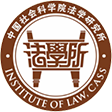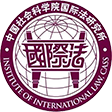 字号:
字号:小
中
大
Due to the number of claimants and the complexity of claims, the South China Sea dispute is deemed as the “mother of all territorial disputes”. In 2013, the Philippines unilaterally filed an arbitration case, requesting the tribunal to adjudge her disputes with China concerning the interpretation and application of the United Nations Convention on the Law of the Sea (UNCLOS). The Philippines’ submissions were detailed about the legitimacy of China’s historic rights claim based on the “nine-dash line”; the status and maritime entitlements of relevant features in the Nanshan Islands. On July 12, 2016, the tribunal rendered its final award, which mostly backed the Philippines’ position. Immediately, the Chinese government reaffirmed her objection, insisting the award is null and void for the tribunal does not have jurisdiction over any of the claims made by the Philippines.
Up to now, the award showed no help to ease the tensions in the South China Sea area, but involved some non-claimants, the influential countries like the United States, Japan, and Australia in urging China to comply with the rule of arbitration. Those countries even sent military ships and planes near disputed islands. Although those operations were called “freedom of navigation,” there are fears that the area is becoming a flash point with potentially serious global consequences.
Interestingly, it seems that there have been language challenges during the debates, particularly for China to be understood by international society. For example, looking back at the same month when the Philippines commenced the arbitration proceeding, the American Journal of International Law issued a special series on the South China Sea. Thereinto, regarding China’s “historic rights claim”, Florian Dupuy and Pierre-Marie Dupuy studied the recurrence of phrases in China’s claim making reference to history, such as “historic rights”, “historical rights”, “historic title”, and concluded that “to our knowledge, the basis for China’s broad sovereignty claim in the South China Sea has never been officially set out in clear legal terms”. Also, Robert Beckman doubted China’s terminology and discussed some potential interpretations, then seriously criticized the ambiguity of China’s claim as well.
Following this logic, the Philippines declared that China’s attitude on the “nine-dash line” and claim to historic rights are both ambivalent, and she also unilaterally gave some potential interpretations for China in her submissions. Next, the tribunal in the Hague again followed this logic and consequently formed its final award on the so-called China’s historic rights claim after analyzing some potential interpretations, regardless of China’s non-acceptance, non-participation in the arbitration and China’s claim that it “has never been officially set out in clear legal terms.” In this sense, China paid the price for her unclear usage of “legal terms.”
Beckman attributed China’s terminology to a policy of “strategic ambiguity.” Similarly, in The Diplomat magazine, Graham Webster described the Chinese government’s reaction to the relevant actions concerning the South China Sea as a “multilingual puzzle.” He also commented that Chinese-language versions reveal “extreme subtlety in wording and an apparently coordinated effort to maintain strategic ambiguity on key questions about China’s position.” Actually, simply making a web search on the topic, understanding China’s position in a strategic and political way is far from unfamiliar in the English-speaking world. But, is this kind of understanding fair to China? What if we analyze the Chinese language version or terminology itself?
As Koskenniemi pointed out, “legal styles are styles of argument, of linguistic expression”, and “the objectives of international law appear differently depending on one’s standpoint. International law certainly seeks to realize the political values, interests, and preferences of various international actors.” International law can be deemed as a professional language, which cannot be separated from its linguistic and political context, and is full of indeterminacy because different lawyers construe the same law differently.
For instance, according to my recent research, it is true that the Chinese government has not given a clarification for “China’s historic rights claim”. But not only that, before the initiation of the Arbitration, except being discussed in the academic circles, the Chinese government has never officially used the terminology “historic rights claim” among her South China Sea claims, or formally declared that China has specific historic rights claims in the South China Sea within the area of the “nine-dash line.” Actually, only one piece of Chinese legislation used the term of “historic rights”, which is China’s Exclusive Economic Zone and Continental Shelf Act carried out in 1998, stating “the provisions of this Act shall not affect the historical rights of the People’s Republic of China”, but no mention about the South China Sea. On the contrary, the Chinese government has consistently expressed in a kind of unified wording, like “China’s sovereignty and relevant rights were formed throughout the long course of history”, “China’s sovereignty over the islands are based on the historic facts and law”, and “China’s rights in the South China Sea formed throughout the history.”
Seriously, “historic rights claim” and “claim based on history or historic facts” are not the same, because the “historic rights” and “historic title” are specific concepts in the law of the sea, which can be discussed under the topic of “maritime entitlement” under UNCLOS. However, China’s claims over the South China Sea islands and relevant waters involve both land and maritime aspects. First, China’s land claim is based on her title to Dosha, Zhongsha, Xisha, and Nansha Islands (island group or archipelago), including occupation of terra nullius and treaty and territory reversion. Second, China’s maritime claim is based on the integral status of thus four islands, nothing about any singular feature. However, the tribunal beforehand separated China’s integral claim over the group of Islands and concluded that China has a dispute on entitlements to maritime areas and the status of some singular features (e.g. Mischief Reef, Second Thomas Shoal and Subi Reef) with the Philippines. Evidently, status of singular features is quite distinct from status of features as part of islands under UNCLOS or the law of sea. In this sense, such preliminary consideration was an underlying assumption denying China’s territorial claim over the islands, and essentially disposed China’s title to her land territory. If so, the award would be illegal because UNCLOS, as a law of the sea, cannot rule on (land) sovereignty.
Besides, since law in the courtroom or in arbitration is a process of argumentation, full argument with due process is very important for the realization of legal justice. But, in the South China Sea case, the arbitration was not only non-fully-argued, but not argued at all. Here, I am not willing to simply refute the award by citing my recent research or logical argument above, but want to prove that mistakes in the award are possible to exist. The theory of justice told us, justice should include the justice of rectifying injustices. Thus, what troubled me is, what is the “due process” guarantee of justice in the South China Sea case? If you were China’s lawyer, what suggestions could you give to correct the injustice (if there was one) in a legal way for China? I believe the question is hard to answer inside UNCLOS, because, unfortunately, there are no remedy procedures set out in the UNCLOS dispute settlement system.
Let’s return to the discussion on the international law as a language. If considering how the world has been conquered by the English language in the last two centuries, we should be aware that the popularization of law and international law (including their professional phrases and terms) have never been accepted without collisions. China has a very unhappy experience in international law. Around two hundred years ago, China’s Qing Dynasty was forced to open her door, which was followed by facing miserable aggression and invasion for a whole century. Not until 1863, China first translated an international law book named Elements of International Law written by Henry Wheaton, then started to learn from international law theory. However, during that terrible period, the reality of Chinese international law practice had been a suffering. When the Qing Dynasty collapsed in 1911, China had more than 100 unequal treaties with over 20 foreign countries. After the UN was established in 1945, new China again experienced detours for decades, and the international law education was not fully retained until the 1990s.
Fairly understanding is the prerequisite of peace and justice. Like the gap between native English-speakers and English-speakers as a second language, it cannot be neglected that gaps on law thinking and usage are yet inevitable comparing China to western countries with a long history of law tradition. Accordingly, I hope my discussion offered a language perspective to promote comprehensive understanding of China’s terminology puzzle, as well as to ease tension by avoiding the stereotyped tongue of “strategic” distrust.



